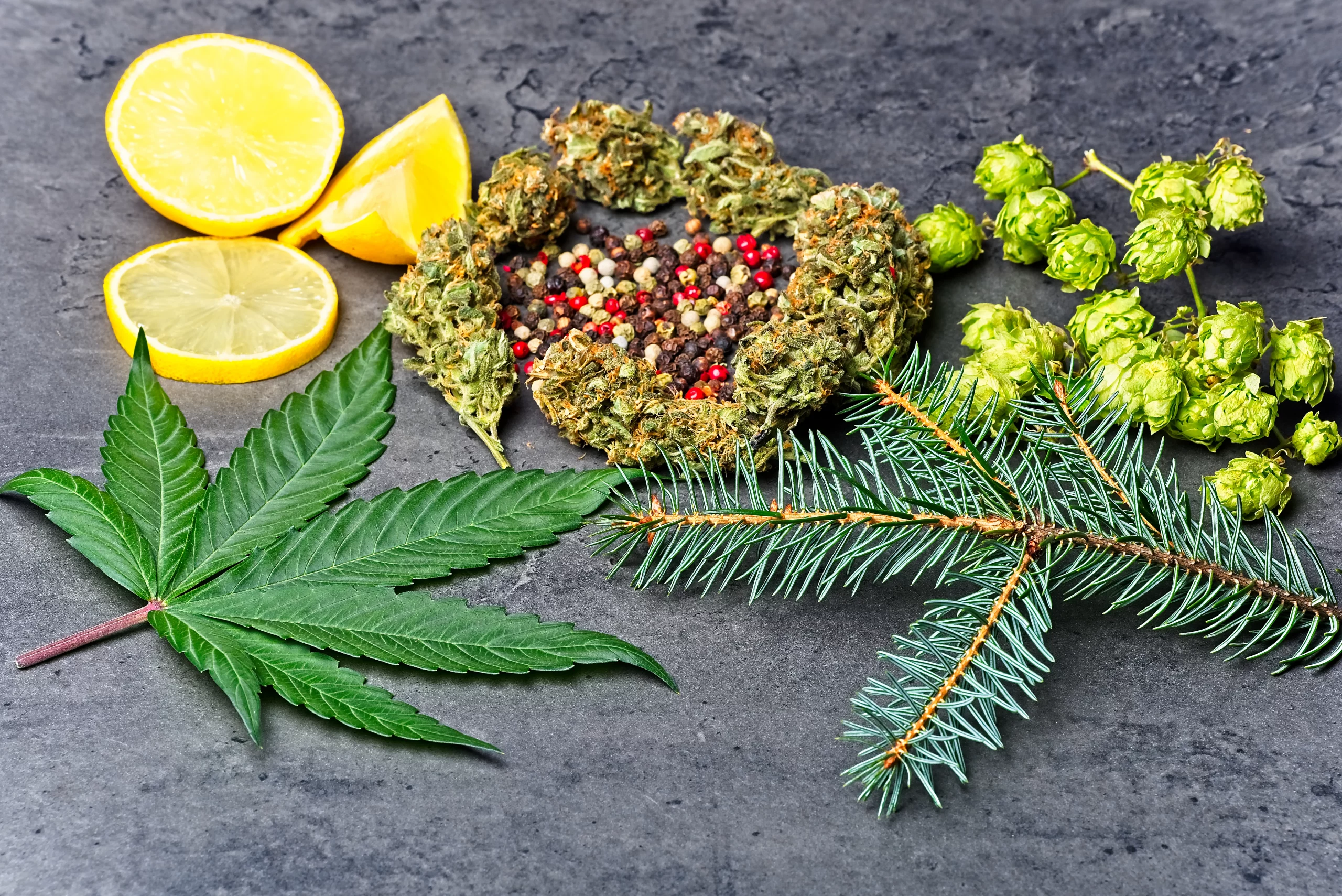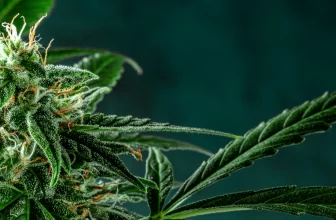
Have you ever wondered what terpenes are and why they’re important in the cannabis community? They’re actually pretty cool, and we’ll tell you why.
They are not only responsible for the characteristic aroma of different cannabis strains, but also have their own therapeutic effects.
The CBD and THC percentage are the main factors for indica or sativa effects. But each of the many terpenes in the plant changes in smell, taste, and specific medicinal properties.
Terpenes 101
In short, they are an essential compound in cannabis and are among the most common organic compounds. Almost all plants produce terpenes, from citrus to conifers, and cannabis, in particular, produces loads of them.
They are responsible for the fragrant smell in plants. Highly aromatic plants like lavender, rosemary, and mint are full of terpenes. Because of their composition, they represent the characteristic herbaceous, spicy, floral, and fruity aromas you’re familiar with.
But that’s not all. Let’s get down to the nitty gritty science behind terpenes.
The Science Behind Terpenes
Terpenes are volatile organic substances from which we have extracted essential oils for thousands of years. They’re also found in cannabis plants and give them a distinctive smell. In short, they control how a plant tastes and smells. Each terpene has a distinct flavor, aroma, and set of therapeutic characteristics.
Cannabis has well over 500 known components, 140 of which are terpenes. Chemically, they belong to carbon-hydrogen compounds. To date, researchers have discovered over 8,000 terpenes and around 30,000 terpenoids. They belong to secondary plant substances, meaning they are not necessary for a plant’s survival.
Terpenes are a strong trait of the cannabis plant, but they’re found not just in indica, sativa, and ruderalis, but in all plants. As a result, all the aromas and flavors associated with them are named after plants.
For example, they give lemons their unique flavor can be found in the sweet and tart Lemon Kush marijuana strain when appropriately bred.
The Many Uses of Terpenes
Dozens of scientific studies show the diverse medical, biological, and industrial potential of this simple hydrocarbon compound. Terpenes have a lot of other interesting uses, too. In fact, you’ve probably experienced their power even if you weren’t aware.
Cannabis Plant Protection
Cannabis plants are typically less susceptible to parasites, pests, fungi, and bacteria. Terpenes handle this, keeping your hemp plants pest-free.
They are mostly present in the plant’s resin, known as trichomes. These tiny, sticky growths develop on the cannabis buds to enhance the pest management system’s natural defenses. The basic function of the cannabis plant’s terpenes is to defend and protect them through smell.
Essential Oils
Like cannabinoids, we can also isolate essential oils from the flowers and leaves of hemp plants. The key components of these oils are terpenes.
Pesticides
Plants use terpenes to attract beneficial insects and pollinators and protect against pests. For this reason, you can safely use them as environmentally friendly insecticides and pesticides.
Food and Perfume
Besides aromatherapy, manufacturers also use terpenes as flavorings in the food industry or as odorants in the perfume industry.
Cleaning
Terpenes are highly versatile and excellent components for cleaning agents and solvents because they dissolve fat.

Medicinal Uses of Terpenes
Terpenes are phytochemicals that have recently aroused great interest from biologists and pharmacologists due to their incredibly diverse application areas. Their biological functions open a wide area of research, but their medical potential is likely enormous.
Scientists believe terpenes produce antibacterial, anti-inflammatory, anti-anxiety, mood-enhancing, sedative, relaxing, and even anti-cancer effects. When combined with cannabinoids, we can amplify these effects in several remarkable ways.
The Entourage Effect
Not to be confused with the tarnished legacy of the canceled TV show, the entourage effect is the interaction of cannabinoids and terpenes.
Cannabis research shows that a mixture of botanicals has a higher biological activity than the isolated pure substance alone. Basically, more substances equal better, magnified effects. So when you combine terpenes with cannabinoids, we can amplify the ultimate result to achieve an optimal outcome.
The entourage effect allows you to minimize your THC or CBD dosage and achieve excellent results. Investigations show terpenes can cooperate with the body’s endocannabinoid receptors and change how different substances behave.
With the right product and coordinated interaction of cannabinoids and terpenes, you can achieve a more potent effect, whether you’re seeking relaxation, pain relief, or something else altogether. Products such as full-spectrum oils can optimize the cannabis effect through the entourage effect.
Terpenes Crossing the Blood-Brain Barrier
Terpenes actively affect the blood-brain barrier and can alter the amount of THC or CBD that can cross the barrier.
They are nanoparticle-sized molecules, so to call them small would be an understatement. In contrast to many other medically active substances, terpenes can directly cross the blood-brain barrier and unfold their effects in the central nervous system because of their molecular size.
These aroma profiles are ultimately responsible for your high.
Different Types of Terpenes: Monoterpenes and Sesquiterpenes
Terpenes are a large and diverse group of chemical compounds. What they have in common is the basic building block of isoprene.
- Monoterpenes contain two isoprene units and are described as “light” aromas. They determine the scents of roses and citrus fruits, so they are fruity-floral. Around 900 monoterpenes are known. The star terpenes are myrcene, pinene, and linalool.
- Diterpenes contain four isoprene units. According to current studies, there are around 3,000 diterpenes. You can find one the most well-known diterpenes in coffee: cafestol.
- Triterpenes contain six isoprene units. Examples are azadirone and limonene.
- Sesquiterpenes contain three isoprene units and produce “heavy” aromas with pungent and sandalwood notes reminiscent of musk and tea tree oil. With over 3,000 variants, they represent the largest subgroup of terpenes. They include the musky, skunky, and diesel aromas of some of the most well-known weed plants. Well-known sesquiterpenes are humulene, bisabolol, and beta-selinene.
The Bottom Line: Terpenes Are Essential
Terpenes are crucial in determining the CBD and THC levels in a cannabis plant. The interaction between the chemical compounds and other active components in cannabis plants is also vital. Terpenes and cannabinoids can enhance and intensify each other’s effects. Depending on how they are combined, each element offers a distinct result.
Terpenes provide their users with remarkable therapeutic benefits. These organic, naturally occurring substances have been used for thousands of years by cultures all over the world for their curative qualities, and their potential impact is highly promising.






